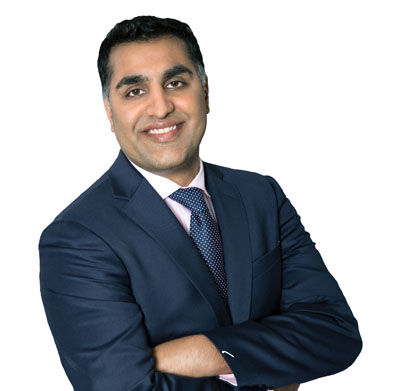Nobody wants to go through surgery and certainly, nobody ever wants to experience chronic pain, but patients can potentially avoid having to endure either one of those life-changing events by receiving “regenerative medicine” treatment at Virginia Spine Institute in Northern Virginia.
“This is a non-surgical treatment and has a minimal recovery time,” said Dr. Niteesh Bharara, a physiatrist and the director of regenerative medicine at Virginia Spine Institute. “It can really change a patient’s life.”
Regenerative medicine is a modern treatment solution that utilizes the body’s natural healing process to rebuild damaged tissue, heal injuries more effectively and eliminate pain. It can be used for most orthopedic conditions including but not limited to hip, knee, shoulder, and spine.
It targets the underlying source of pain without relying on addictive painkillers or surgery and leads to increased function and mobility with a shorter recovery time than surgical options.
The treatment involves safe and effective outpatient procedures for a variety of joint, tendon, ligament and spinal conditions, from lower back pain and arthritis to muscular tears and rotator cuff injuries.
“It’s really important that you go to someone who knows what they are doing and is very experienced with regenerative medicine,” said Bharara. “You need to see a doctor who has done many of these procedures. It takes a significant amount of skill and precision to make sure we’re able to perform the procedure and have a successful result.”
How is it done?
A pioneer in the world of regenerative medicine, Dr. Bharara explained how the process works.
Patients who are interested can go to Virginia Spine Institute for a thorough and comprehensive consultation where the patient provides a history and has a physical exam to create the foundation for making an appropriate diagnosis that will support future medical decisions.
Doctors spend quality time with each patient to understand their overall health, any underlying medical conditions, lifestyle, job requirements, and expectations.
“We will explain to you in detail your diagnoses, discuss your treatment options, and make clear your expected outcome,” according to the Virginia Spine Institute’s website.
Doctors then lay out a plan, deciding whether they will use blood or stem cells for the patient’s treatment.
During the patient’s next appointment, doctors will either draw blood or collect bone marrow. The goal being to either separate blood and get growth factors from the blood or separate bone marrow and retrieve stem cells.
Stem cells can differentiate into bone, cartilage, or fat cells to stimulate healing in the body.
There are many benefits of stem cell therapy, including improved pain relief, decreased inflammation, and increased functionality and range of motion in the affected area.
Growth factors from the blood can stimulate existing cells to have a healing response.
“We take those elements and precisely place it back into the area of the injury,” Bharara explained. “This is where we supercharge the healing process and the pain relief occurs.”
And that is what sets it apart from other pain relief alternatives that are growing in popularity, such as acupuncture.
Doctors are using the body’s own tissue – such as growth factors or stem cells – to heal itself.
“With regenerative medicine, we’re actually looking to treat and fix the problem we’re not looking to just deal with the pain,” said Bharara. “When you fix the problem you get them back to their life.”
What is it like for the patient?
There is a healing process that occurs in the body following an injury, but the body is only capable of taking the healing so far.
“What regenerative medicine does is it maximizes that healing process so the body is able to fully heal,” Bharara said.
The treatment is less complex than surgery, with patients going in and getting out usually within a two- hour period of time.
It is easy for the patient, and the treatment itself is not painful.
Bharara told the story of one successful patient who was a U.S Marine. He was a very athletic person who lifted weights and exercised heavily, but all that activity took a toll on his body, and ultimately he could hardly walk.
He was in severe pain for seven years, but after three rounds of stem cell therapy, his life completely changed.
“Today, he is back to living a full and functional life,” said Bharara. “Regenerative can fix those problems and give the patient their life back.”








